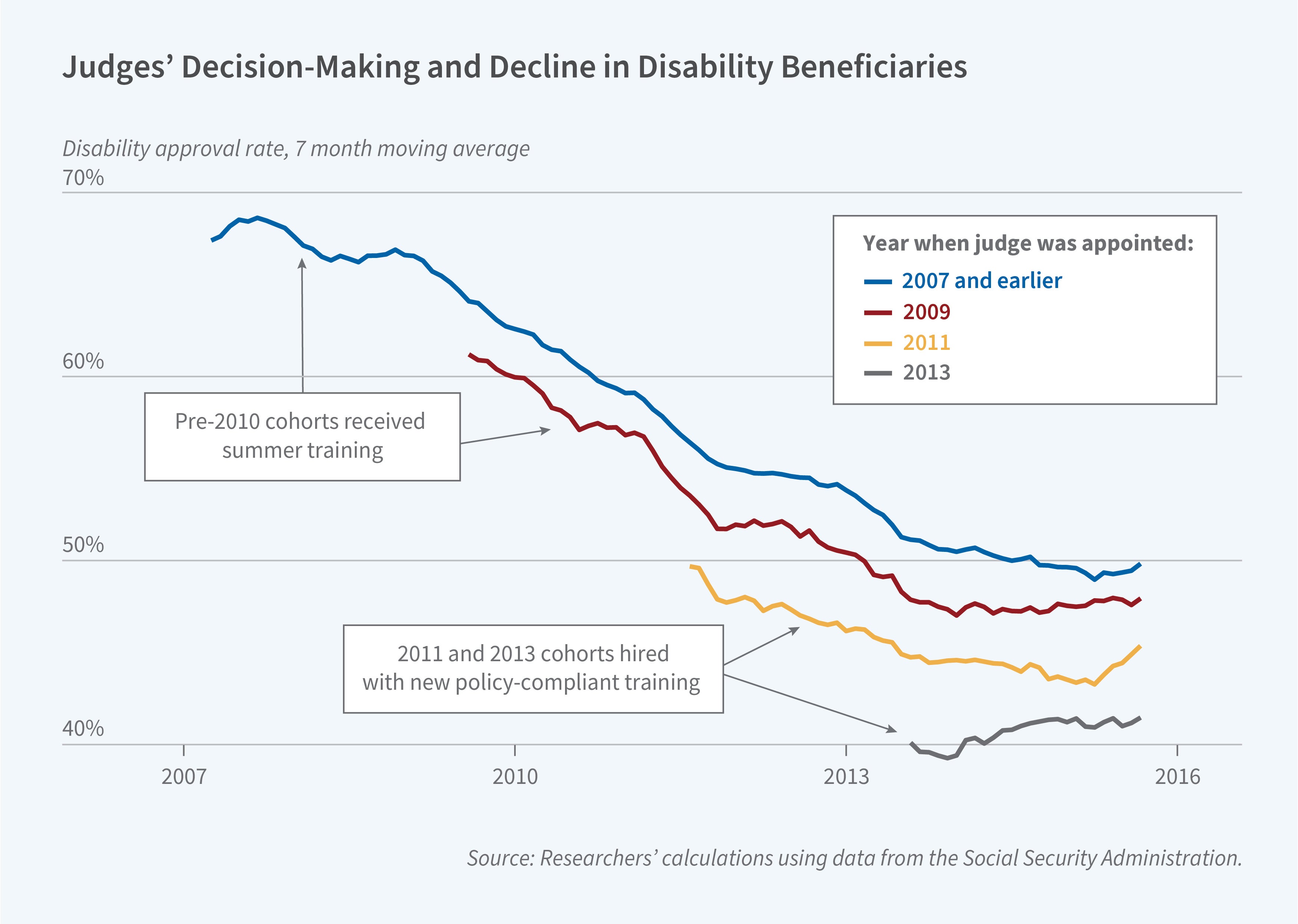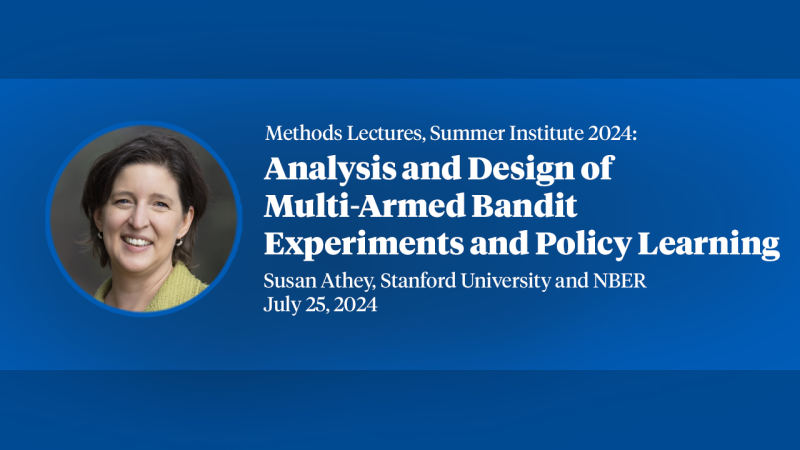Appellate Judges and the Declining Rate of SSDI Approvals

After a long period of growth in the number of disability insurance beneficiaries in the US, in the early 2010s, the total number of disability insurance recipients began to contract, and the labor force participation rate of people with disabilities began to grow. In Social Security Disability Reform and Implications for Employment (NBER RDRC Paper NB23-13), Hilary Hoynes, Nicole Maestas, and Alexander Strand examine how changes in disability case reviews conducted by the Social Security Administration (SSA) between 2007 and 2015 contributed to this development. Some have argued that a lack of full compliance with SSA policies by judges was a major factor in the expansion of the disability program. The authors find that the recent decline was in part due to a judge training program that was phased in starting in 2009.
Between 2008 and 2014, the approval rate for appeals of disability insurance denials fell by more than 20 percentage points, partially as a result of a training initiative for judges.
Social Security Disability Insurance (SSDI) pays a benefit to individuals who were previously employed but who are determined to no longer be able to work. Applications are reviewed by a disability examiner who determines whether the applicant’s impairment makes them unable to perform any work in the national economy. If an application is denied, the applicant can appeal. In some states, the first appeal is reviewed by a different disability examiner in the same office as the initial examiner. If the applicant is denied benefits again, and appeals again, the next review is by an Administrative Law Judge (ALJ). During the early 2000s, when ALJs had long backlogs, some disability insurance applications were also reviewed by Senior Adjudicative Attorneys (SAAs), who were appointed for just this function.
In 2011, the Wall Street Journal profiled an ALJ who approved nearly all disability insurance appeals and who was particularly likely to approve cases brought by a particular attorney. This led to criticism of the disability insurance system in general, suggestions that approval rates were too high, and a hearing by a subcommittee of the US House Ways and Means Committee that focused on improving the decision consistency and accountability of ALJs.
SSA had already begun to institute changes in the training and education of ALJs. Between 2009 and 2011, SSA implemented a summer training program for existing ALJs, and newly hired ALJs were trained using the same materials starting in 2010. Also, SSA analyzed decisions by ALJs with the goal of identifying judges who incorrectly applied agency policies and “outlier” judges who were either awarding or denying benefits in nearly all cases. Further, SSA introduced a software program that allowed judges to compare their decisions to those of their peers. This program also made it easy to access information on SSA policies.
Between 2008 and 2014, the rate at which benefit applications were approved at the appellate level fell by more than 20 percentage points, from over 70 percent of appeals to around 50 percent. The approval rate by initial SSA examiners stayed relatively constant over this period, rising from 35 to 38 percent. The researchers find that judicial turnover and new training protocols for judges explain about a third of the decline in the approval rate for disability insurance appeals.
— Greta Gaffin
The research reported herein was performed pursuant to grant RDR18000003 (Project NB23-13) from the US Social Security Administration (SSA), funded as part of the Retirement and Disability Research Consortium. The opinions and conclusions expressed are solely those of the author(s) and do not represent the opinions or policy of SSA, any agency of the Federal Government, or NBER. Neither the United States Government nor any agency thereof, nor any of their employees, makes any warranty, express or implied, or assumes any legal liability or responsibility for the accuracy, completeness, or usefulness of the contents of this report. Reference herein to any specific commercial product, process or service by trade name, trademark, manufacturer, or otherwise does not necessarily constitute or imply endorsement, recommendation or favoring by the United States Government or any agency thereof.


